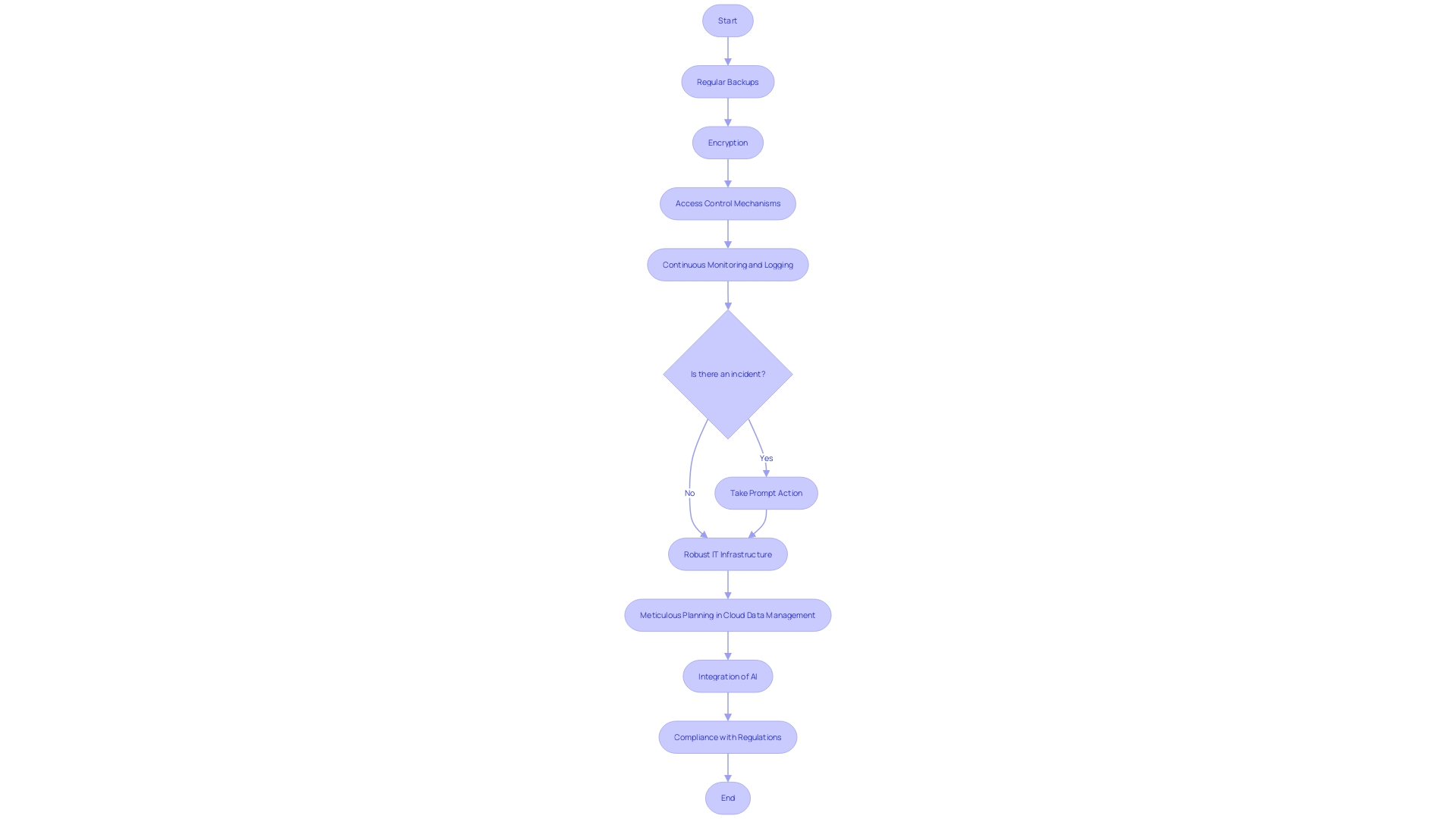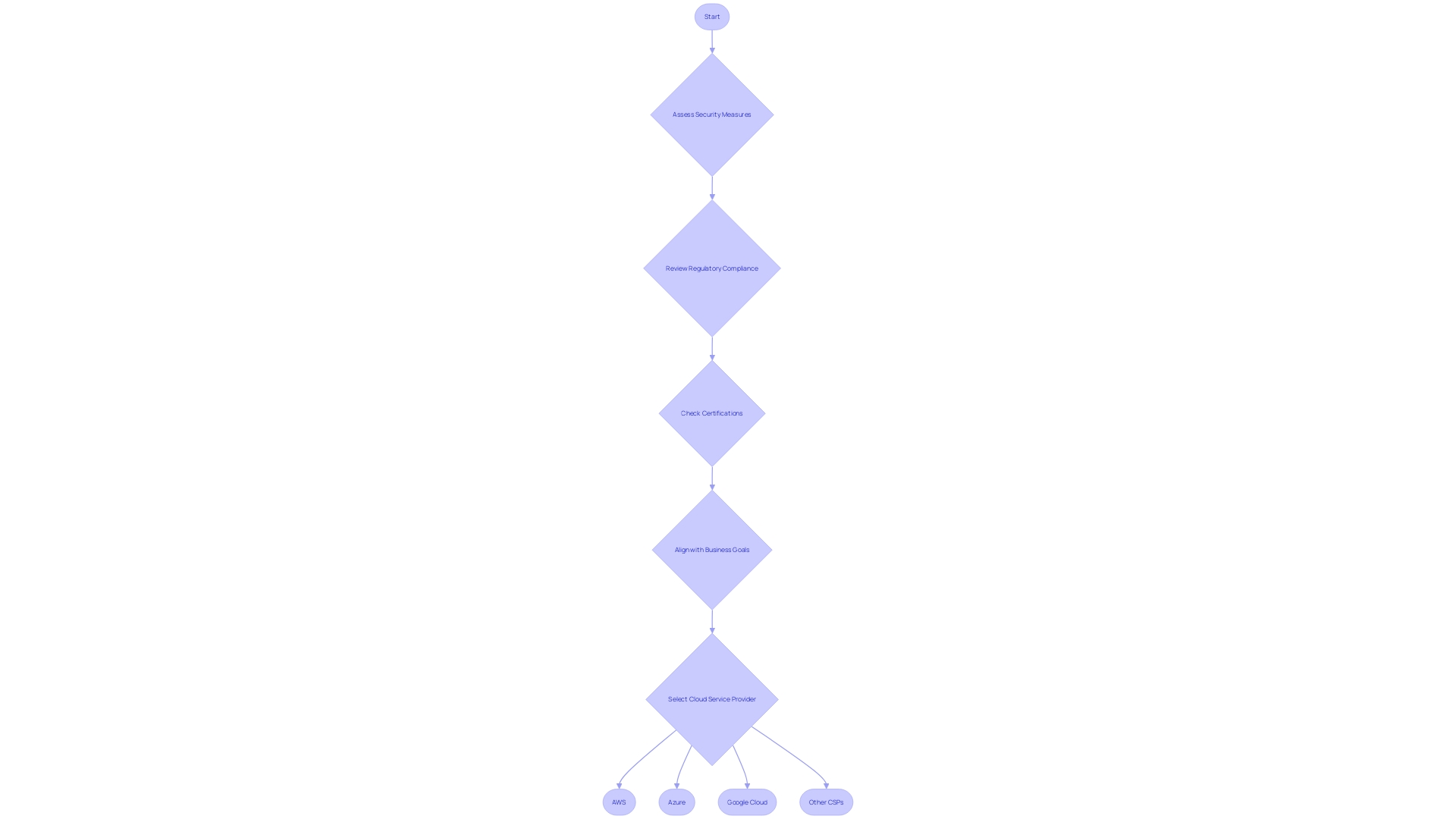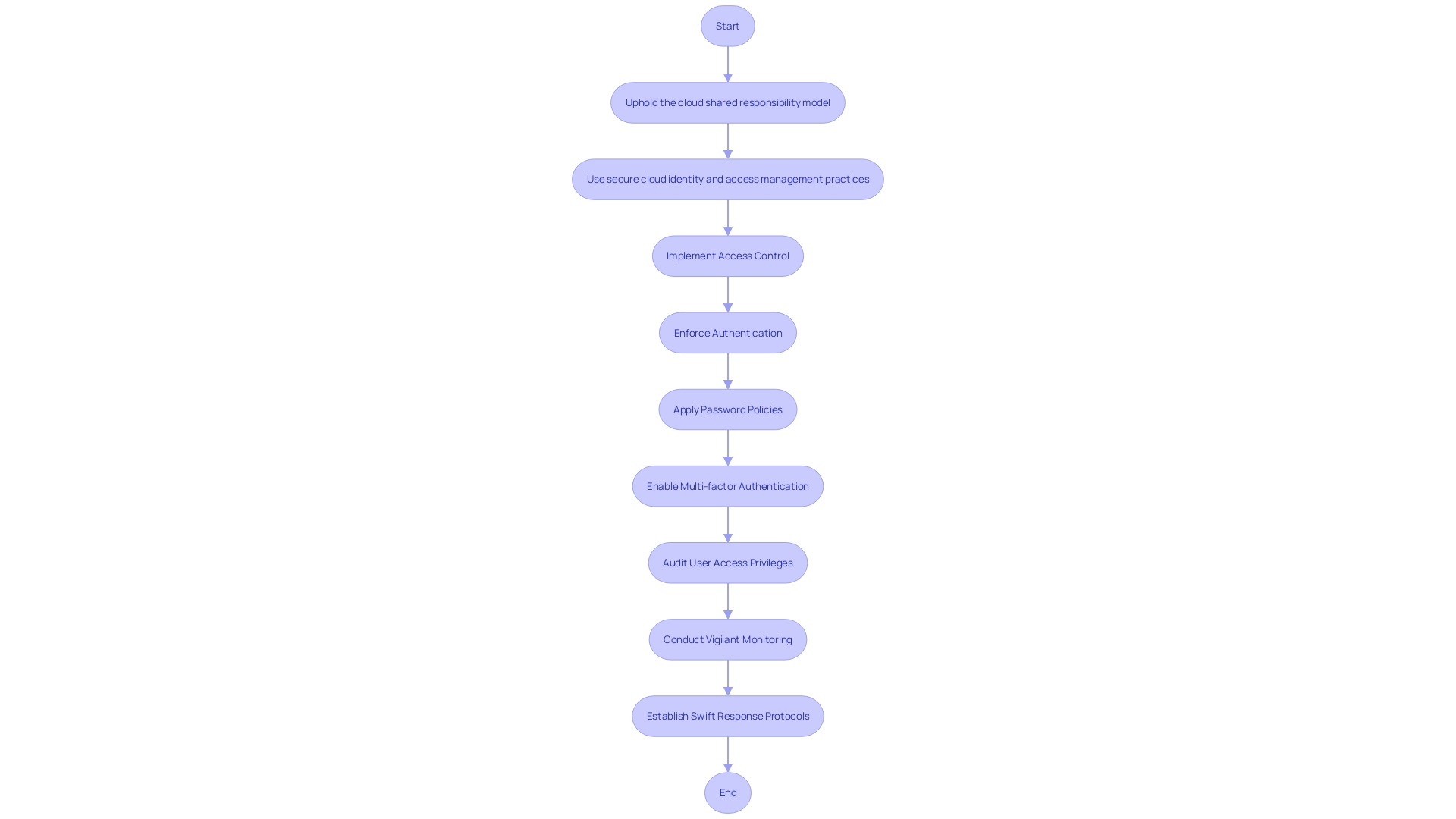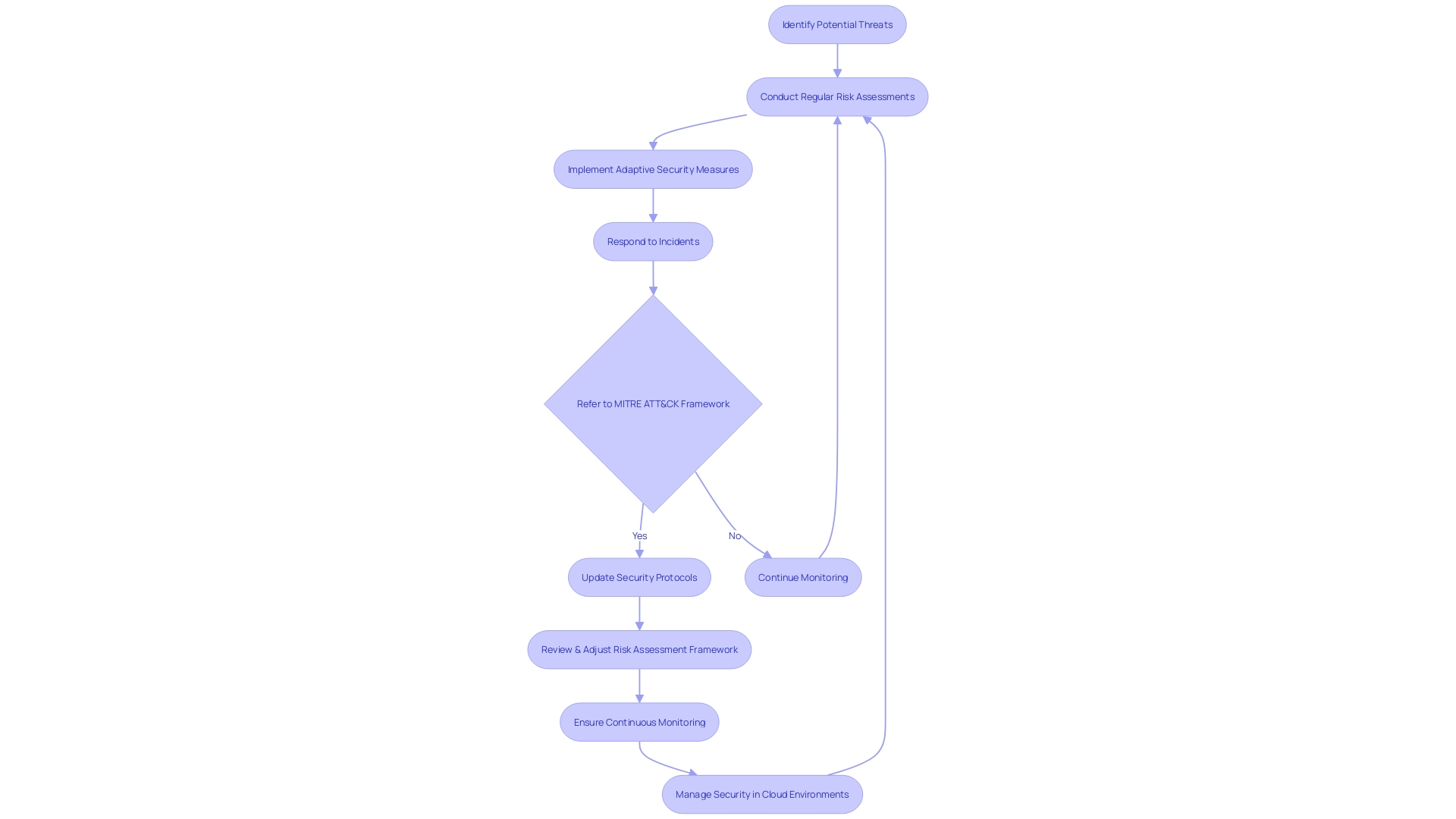Introduction
Cloud data protection is a critical concern for organizations in today's digital landscape. With the increasing reliance on cloud services and the potential risks associated with data breaches and unauthorized access, organizations must adopt robust strategies to safeguard sensitive information. In this article, we will explore the concept of the shared responsibility model in cloud data protection, the challenges organizations face in protecting cloud data, and key strategies to fortify data protection.
We will also discuss the importance of evaluating cloud service providers, implementing data encryption, access control and authentication measures, endpoint security and monitoring, data classification and governance, compliance and regulatory considerations, best practices for cloud data security, risk assessment and mitigation, and the significance of training and awareness programs for cloud data privacy. By understanding these essential aspects and implementing comprehensive data protection measures, organizations can ensure the security, integrity, and availability of their cloud data.
Understanding the Shared Responsibility Model
The idea of collective accountability is essential to safeguarding information in the digital realm. It outlines the separate responsibilities that service providers and their clients have in guaranteeing the security of information and applications. For instance, while the provider is responsible for ensuring the security of the infrastructure in the sky, similar to an online marketplace guaranteeing a safe transaction platform, the customer must protect their information and applications, akin to a property owner installing sufficient locks on a rental.
Just as with a safe, where the manufacturer ensures robust build quality and resistance to tampering, the customer is responsible for installation and access control. This analogy extends to cloud models such as Infrastructure-as-a-Service (IaaS), where the provider manages the physical infrastructure, and the customer utilizes it akin to their information center.
Recent news underscores the importance of this model. An incident involving security at Fortinet exposed unauthorized access to files on a third-party cloud platform, underscoring the potential risks in securing information stored in the cloud. Furthermore, debates over the European Union Agency for Cybersecurity's (ENISA) EUCS certification project underscore concerns over data access by foreign powers, emphasizing the need for clear demarcation of responsibility in securing data against such risks.
Basically, the shared responsibility model in the sky is a collaboration. Providers guarantee the safety of the cloud environment, similar to how a safe's manufacturer is accountable for its impenetrability. Customers, on the other hand, must manage their information within that environment responsibly, ensuring proper security practices are followed to safeguard their valuable data.
Challenges in Cloud Data Protection
Cloud protection is a multifaceted undertaking, vital for safeguarding sensitive information from damage, loss, or unauthorized access. It's crucial for organizations to implement strong measures to maintain privacy and confidentiality, especially in shared infrastructures. The stakes are high; breaches can severely impact an organization's financial standing, reputation, and customer trust. Furthermore, adherence to evolving regulations on safeguarding information and ensuring data accessibility pose significant challenges.
Consider Pyramid Healthcare's experience, where a complex IT environment—exacerbated by mergers and acquisitions—required sophisticated information protection strategies. Just like Pyramid's predicament, numerous organizations encounter the obstacle of safeguarding a constantly expanding amount of information, additionally hindered by the variety and swift evolution of today's enterprise landscape.
A recent incident involving Fortinet, a cybersecurity giant, highlights the danger of information breaches, as a threat actor claimed to have stolen a significant amount of information from the company's Azure SharePoint instance. This incident highlights the importance of strict measures to safeguard cloud information.
Efficient safeguarding approaches focus on three fundamental pillars: information integrity, to safeguard against harmful or unintentional harm; information accessibility, to ensure prompt information restoration; and user permissions, to limit information access exclusively to authorized personnel. The fundamental concept is to ensure information remains secure and easily accessible to its users at all times.
Considering that almost 40% of breaches are caused by cyber incidents, and taking into account the high number of notifications received in the initial six months of a recent year, it is evident that organizations need to give top priority to ensuring comprehensive safeguarding of their cloud-based information. This becomes even more crucial as the European Data Act targets lock-in terms, impacting information transfer procedures and highlighting the significance of proactive information management and security practices.
Key Strategies for Cloud Data Protection
To strengthen cloud protection, it is crucial to implement comprehensive and dynamic strategies. Regular backups are not just a precaution; they are a necessity in defending against information loss and ensuring business continuity. In light of the increasing sophistication of cyber threats, such as ransomware, encryption becomes an indispensable shield to guard against unauthorized access. Strong access control mechanisms form another layer of defense, with multi-factor authentication and role-based access controls acting as gatekeepers to sensitive information. Continuous monitoring and logging provide visibility and facilitate prompt action in the face of incidents.
The importance of these strategies is underscored by the experiences of Chess.com, a global platform with over 150 million users, where robust IT infrastructure is critical for delivering consistent service. Similarly, Azur Games' migration to ClickHouse Cloud on AWS for their 120 TB database demonstrates the necessity of meticulous planning in cloud data management to avoid downtime. The partnership between Veeam Software and Hewlett Packard Enterprise demonstrates the evolving landscape of data protection, where the integration of AI and compliance with regulations such as GDPR become essential for resilience in the cloud. By mastering cloud-based information management to meet regulatory compliance and implementing customized solutions, businesses can enhance their data security and ensure uninterrupted access to vital information.

Evaluating Cloud Providers
When selecting a cloud service provider, organizations must navigate a complex landscape of security challenges and regulatory compliance. Essential to this process is comprehending that safeguarding information is not only a technical matter but also a legal one, as different international laws govern how customer information is managed and safeguarded. For example, regulations may require that information be stored and processed within specific jurisdictions, a point emphasized by the European Union's General Data Protection Regulation (GDPR) which mandates stringent controls on information residency, minimization, and storage limitation.
This legal framework, combined with the technical intricacies of information resilience and cybersecurity - where the objective is information accessibility at any given moment under any condition - makes it crucial to thoroughly assess potential service providers. Providers should not only offer robust cybersecurity measures but also ensure adherence to industry certifications and the ability to recover swiftly from incidents, thereby minimizing the impact on customers. For instance, Skyflow's collaboration with AWS emphasizes the importance of aligning with cloud providers that comprehend the complexities of global privacy regulations and can provide solutions like privacy vaults that cater to these intricate requirements.
Furthermore, the recent deficiencies in the European Union Agency for Cybersecurity's (ENISA) European certification initiative, which no longer ensures exemption from non-European legislation even at the most advanced certification levels, impose extra accountability on organizations to determine the degree of security provided by providers. Given this, certifications such as France's SecNumCloud, which incorporates standards for safeguarding information against foreign authorities, become a crucial factor in the decision-making process. In the end, the selected provider in the sky must not only match technically with an organization's protection needs but also align strategically with its compliance posture and business goals.

Implementing Data Encryption
In the era of global information exchange and stringent privacy laws, encrypting data stored in the cloud is not simply an option, but a necessity. For companies utilizing cloud services, it's crucial to encrypt sensitive information both when stored and during transmission. This guarantees that, even if there is unauthorized access, the information remains incomprehensible to intruders. Utilizing strong encryption algorithms and careful encryption key management is essential to strengthen security.
Case in point, Skyflow, an AWS Partner, has created a zero-trust privacy vault designed to address the complexities of protecting customer information amidst diverse international regulations. This is especially important for cloud-first SaaS companies that operate without geographical boundaries and must navigate laws dictating where customer information can be physically stored, such as the GDPR in the EU.
Furthermore, the advent of quantum computing posits both opportunities and challenges. Quantum computing firms like Quantinuum are advancing the field, which will inevitably impact security practices. Enterprises like EAGLYS are pioneering the use of Homomorphic Encryption, which allows for operations on encrypted information without the need to decrypt it, offering a glimpse into the future of information privacy.
With the exponential increase in the volume of information and the accompanying danger of online security risks such as ransomware, the adoption of backup storage in online servers emerges as a crucial element of a robust data safeguarding approach. It's an investment in not only securing information but in ensuring business continuity.
Considering the development of computing in the sky, it has become clear that the security and availability of information are of utmost importance. With the advancement of technologies like Ciphertext Policy Attribute-Based Encryption (CP-ABE), we observe a collective endeavor to uphold confidentiality and privacy for outsourced information.
To summarize, encryption is an essential part of ensuring the security of information in the cloud. As organizations progressively shift to cloud-based platforms, comprehending and implementing the latest measures to protect, including encryption, is crucial for safeguarding sensitive information and adhering to international regulations.
Access Control and Authentication
Ensuring the protection of information stored in the cloud is crucial for every organization, with access control and authentication serving as the cornerstone of defensive strategies. Strong password policies must be enforced, complemented by multi-factor authentication systems to verify user identities robustly. Regular audits of user access privileges are equally essential to maintain tight control over who can view and manipulate sensitive information.
Real-world incidents underline the importance of such measures. For instance, a case involving suspicious activity in an AWS account highlighted how a fraudulent IAM user attempted to manipulate email service limits, which could have led to extensive phishing or spam campaigns. This example demonstrates the necessity of vigilant monitoring and swift response protocols.
The shared responsibility model further emphasizes the need for diligent security practices. Both service providers and their clients must actively participate in protecting every aspect of the online environment, including information and identities. This collaborative approach is crucial in view of the changing regulatory landscape, with frameworks like DORA and NIS2 imposing rigorous measures on information management.
Eyal Estrin, in his discourse on building cloud-native applications, stresses the significance of Identity and Access Management in the design phase, particularly in determining how to handle customer identities. Whether syncing with an identity provider for internal applications or utilizing protocols like SAML, OAuth, or OpenID Connect for external applications, the approach to authentication must be carefully considered.
As the digital environment progresses, the safety of data stored remotely must be a priority, not only to safeguard customer confidence and brand image, but also to prevent significant financial repercussions. With intellectual property in jeopardy and the need for worldwide adherence, a strong approach to protecting cloud-based information is not just a defensive measure but a crucial necessity for ongoing operations and staying ahead of the competition.

Endpoint Security and Monitoring
A thorough endpoint protection plan is crucial for protecting cloud information. It involves deploying solutions with antivirus, firewall, and intrusion detection capabilities. Continuous monitoring is crucial for identifying potential incidents or vulnerabilities in endpoint devices. This proactive stance on endpoint defense is crucial in securing data interactions. An endpoint can be any device, such as desktops, laptops, or mobile phones, and these are often the primary targets for cybercriminals. Endpoint protection programs leverage threat intelligence to stay updated on emerging threats and provide more precise detection of infections. Endpoint Detection and Response (EDR) is another layer, making it harder for attackers to bypass conventional measures. This is demonstrated by a real-world incident involving unauthorized AWS account access, emphasizing the importance of strong endpoint security to prevent breaches.
Data Classification and Governance
To strengthen protection of information in cloud environments, organizations are implementing advanced classification and governance frameworks. At the core of this strategic approach is the process of information classification, which involves categorizing information based on its sensitivity. This categorization is crucial as it informs the deployment of tailored security controls and guides the efficient allocation of protective resources.
Governance policies support this by directing the stewardship of information throughout its complete lifecycle, including important stages such as retention and disposal. These policies are not static; they are shaped by evolving legislative landscapes, such as the Evidence Act of 2019, which underscores the need for information to be discoverable and managed with a standardized approach. A practical example of these principles in action is seen at the National Center for Science and Engineering Statistics, which has developed methods that contribute to a broader federal information ecosystem.
The driving force for strong safeguarding of information is highlighted by the severe consequences of breaches, which can seriously affect an organization's financial position, reputation, and compliance with the law. Considering the increasing volume of information and its essential role in business operations, any interruption or loss can have serious implications. This truth obliges organizations to concentrate on three foundations of information protection: security, availability, and access control.
Renowned experts from OODA and TechRadar Pro emphasize the intricacy of today's information landscapes, where organizations manage an unprecedented amount of sensitive data. To navigate this complexity, classification emerges as a pivotal practice. It not only aids in streamlining the use and safeguarding of information but also ensures compliance with regulatory standards. The objective is to establish a comprehensive management system that ensures sensitive information is only accessible to authorized individuals, both internally and externally, and consistently governed in compliance with all relevant laws and regulations.
Ultimately, the implementation of classification and management frameworks is a crucial measure in enhancing security in the cloud. Such frameworks provide the structure needed to manage information with precision and foresight, ensuring that sensitive information remains secure and under strict control at all times.
Compliance and Regulatory Considerations
Understanding and adhering to regulations for protection is not just a legal obligation but a critical component of safeguarding strategies for information in the cloud. With the worldwide reach of cloud services, organizations need to navigate a complicated landscape of legal frameworks, such as the General Data Protection Regulation (GDPR), which outlines strict protocols for handling personal information within the European Economic Area (EEA). To exemplify, GDPR requires that personal information be processed and stored within the EEA or approved locations unless individuals provide explicit consent. Additionally, principles of information minimization and storage limitation are enforced, ensuring that only necessary information is kept for no longer than needed. Another prominent right is the individuals' ability to access their information held by organizations.
Staying current with these evolving regulations is a dynamic process. With legislative advancements, such as the European Data Act and the Data Governance Act, businesses face ongoing challenges to ensure their practices related to storing and processing information in remote servers remain compliant. For example, the Act on Information, agreed upon politically in 2023, aims to guarantee fairness and innovation in the digital domain, while the Act on Data Management, applicable since September 2023, sets the foundation for secure information exchange and establishes Common European information spaces.
Therefore, complying with regulatory requirements in the cloud calls for a comprehensive understanding of the rules that pertain to specific industries and jurisdictions, as well as a commitment to aligning operations with these laws. This proactive approach not only ensures lawful conduct but also protects organizations from potential legal and financial repercussions, thereby maintaining the trust and confidence of stakeholders and customers alike.
Best Practices for Cloud Data Security
To ensure the protection of cloud information, organizations must prioritize the implementation of advanced measures against potential threats. This involves not only performing regular backups and examining security logs but also implementing measures to prevent loss of information and conducting frequent evaluations of safety. It is critical to maintain awareness of the evolving threat landscape and to be proactive in applying security updates and patches to defend against new vulnerabilities.
A case in point is the incident involving suspicious AWS support case activities, which was not initiated by the client but raised alarms due to a request to increase SES sending limits—a service the client did not use. This instance highlights the importance of ongoing surveillance to identify and address unapproved actions, thus safeguarding the integrity of information in the cloud.
Furthermore, the recent report from the Security Alliance underscores the significance of comprehending the intricate connections and potential misconfigurations within cloud services, which may result in data exposure and breaches. The report highlights the complexity of attacks and the necessity for comprehensive strategies that go beyond the organization to involve vendors and partners.
Organizations must also acknowledge their role within the shared responsibility model of safeguarding in the cloud. While service providers like AWS, Microsoft Azure, or Google Cloud Platform handle the management of the infrastructure in the cloud, clients are responsible for ensuring the safety of their information and applications within that environment.
Compliance with regulations like the GDPR is also crucial for organizations to avoid legal and financial repercussions. The GDPR enforces rigorous protocols for information residency, minimization, and storage limitation, strengthening the necessity for conscientious management practices to guarantee regulatory compliance.
Taking into account these factors, it is evident that an effective strategy for ensuring the safety and privacy of sensitive information stored remotely goes beyond simply implementing a set of best practices; it requires a comprehensive approach that includes risk assessment, continuous monitoring, understanding legal requirements, and collaboration between providers and clients to guarantee the protection of data in the cloud.
Risk Assessment and Mitigation
The evolving nature of threats and the complexity of managing information across diverse cloud environments underscore the sophistication of ensuring its security. Recent incidents, such as the unauthorized access to a third-party cloud-based file drive reported by Fortinet, reveal the urgent need for robust risk assessment frameworks. Organizations must implement continuous monitoring and adaptive risk mitigation strategies to safeguard against unauthorized access attempts, which could lead to the compromise of sensitive information.
A notable case within an AWS environment illustrates the perils of overlooking seemingly innocuous services like the Simple Email Service (SES), which attackers can exploit to launch phishing or spam campaigns. Regular risk assessments would have flagged the creation of a support case by an unrecognized IAM user, prompting immediate investigation. The incident unfolded over a month and was characterized by distinct phases, each requiring a specific response as per the MITRE ATT&CK framework.
Moreover, as the acceptance of cloud technology expands, with 78% of organizations adopting hybrid and multi-cloud strategies, the demand for safeguarding information increases. Organizations must ensure compliance with frameworks like the GDPR, which mandates data residency, minimization, and storage limitation. These protocols are essential for maintaining the privacy rights of individuals within the EEA, and organizations must adhere to them to avoid regulatory penalties and foster trust with their stakeholders.
In the face of these challenges, industry experts stress the idea of system resilience, which involves the capability to anticipate, prepare for, reduce the impact of, and recover from incidents without long-term compromise. For example, a robust system would contain an incident to prevent cascading failures and enable rapid recovery with minimal customer impact. As a result, this resilience extends to providers and customers, reinforcing the need for ongoing vigilance and adaptive security measures to maintain the integrity of systems.
Essentially, protecting cloud information is not a static process but a dynamic one that requires continual reassessment of risks, adaptation to emerging threats, and alignment with regulatory standards to ensure the overall resilience of cloud infrastructures.

Training and Awareness for Cloud Data Privacy
To strengthen cloud protection, it's crucial for organizations to implement thorough training and awareness programs customized to their workforce. These programs should communicate the complexities of privacy and the significance of security measures, ensuring that every team member is equipped with the knowledge to safeguard sensitive information. In particular, techniques such as information anonymization and pseudonymization play a critical role in maintaining privacy by transforming personal information in such a way that individuals can no longer be identified, either directly or indirectly.
Efficient training must encompass the intricacies of these techniques, as they are crucial for projects that utilize extensive datasets for machine learning and AI — domains where privacy of information cannot be jeopardized. Through regular training sessions and promoting awareness campaigns, organizations can foster a strong culture of privacy and protection. This forward-thinking approach is backed by recent advancements in AI and cybersecurity, compelling companies to comply with rigorous obligations regarding the protection of information at all levels of staff.
Moreover, it is essential to tackle the legal dimensions of privacy concerns, given the growing occurrence of security breaches and alterations in regulations necessitate a knowledgeable staff. By utilizing knowledge from industry leaders like AWS, Microsoft, and Morgan Lewis, organizations can stay up to date with the latest legal strategies and frameworks that safeguard intellectual property and align with business strategies while ensuring privacy and security of information. With 80% of schools experiencing ransomware attacks in 2022, a rise from the previous year, the need for rigorous cybersecurity education is more pressing than ever, especially as the sophistication of attacks continues to evolve. Ultimately, a well-trained workforce is the first line of defense in the ongoing effort to protect cloud data and maintain privacy.

Conclusion
In conclusion, cloud data protection is crucial for organizations in today's digital landscape. The shared responsibility model highlights the roles of cloud service providers and customers in ensuring data security. Challenges include data privacy, compliance with regulations, and data availability.
To fortify cloud data protection, organizations should adopt strategies like regular backups, data encryption, access control, and monitoring. Evaluating cloud service providers is essential for their cybersecurity measures.
Data encryption is vital for protecting sensitive information and complying with privacy laws. Access control and authentication play a crucial role in data security. Endpoint security and monitoring help identify potential security incidents.
Data classification and governance frameworks guide the allocation of protective resources. Compliance with data protection regulations is critical to avoid legal repercussions.
Best practices for cloud data security include backups, data loss prevention, and staying updated on emerging threats. Risk assessment and mitigation are necessary to safeguard against unauthorized access.
Training and awareness programs are crucial for data privacy and security. By implementing comprehensive data protection measures, organizations can ensure the security, integrity, and availability of their cloud data.
In summary, cloud data protection requires encryption, access control, endpoint security, compliance, and risk assessment. Prioritizing these measures helps organizations safeguard their sensitive information and maintain stakeholder trust.




